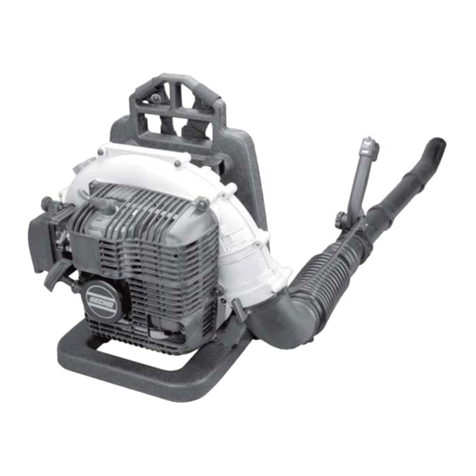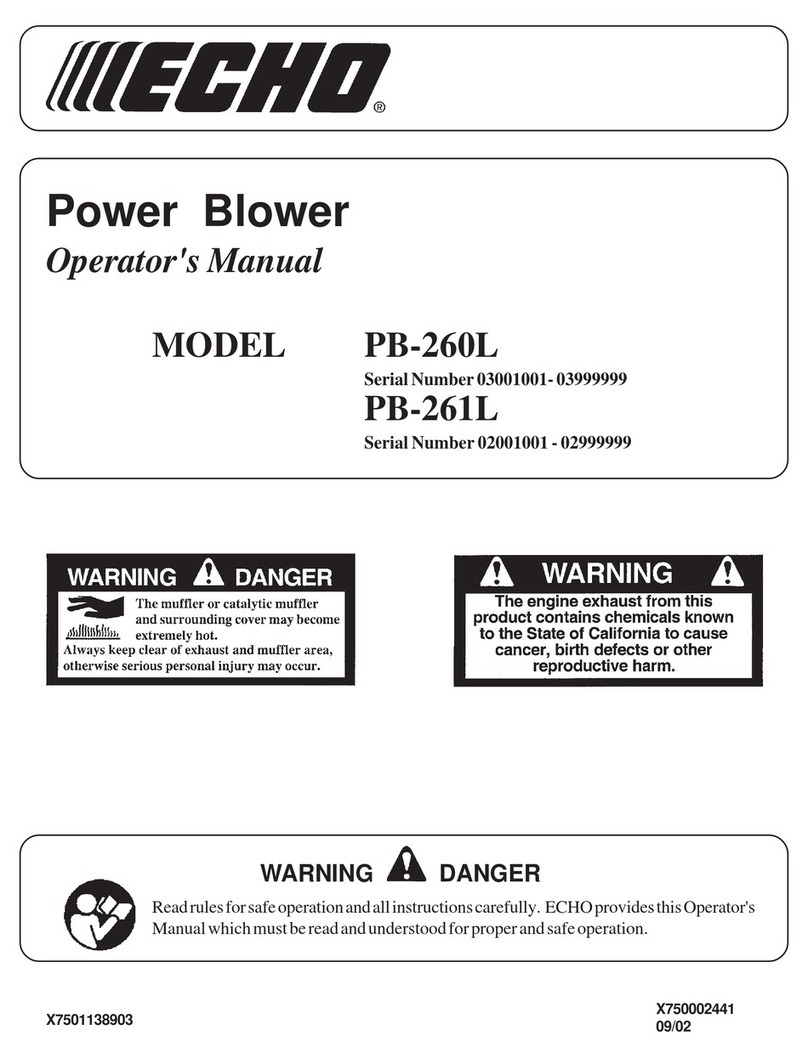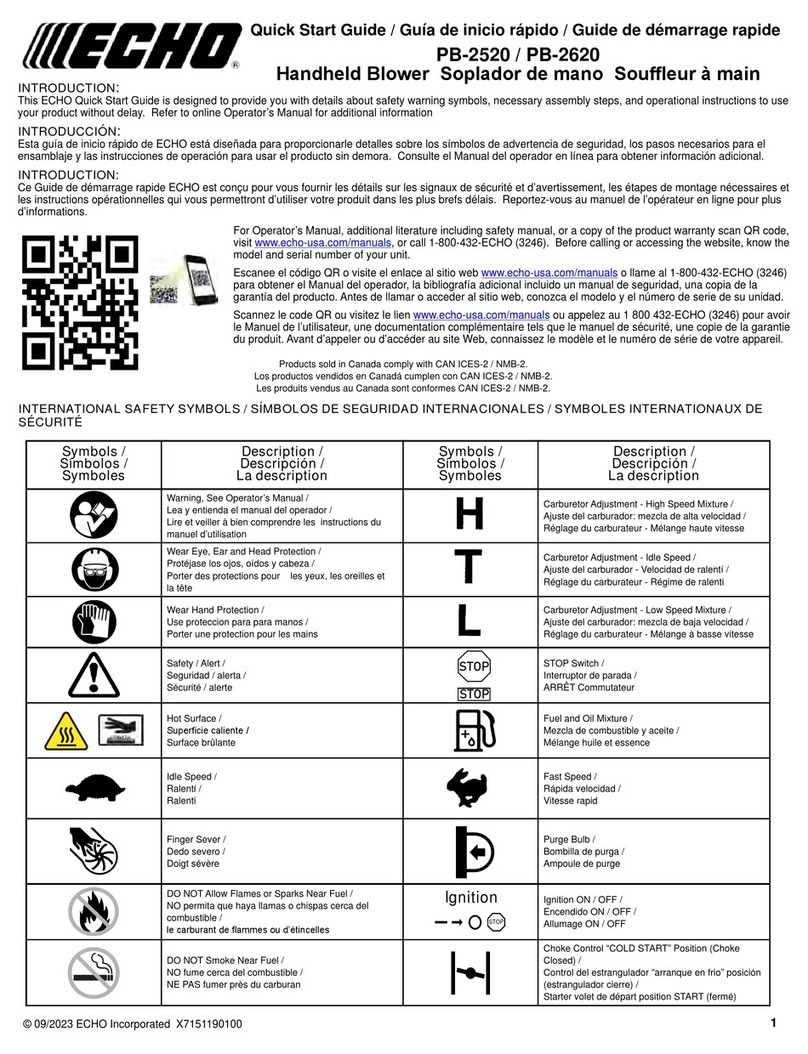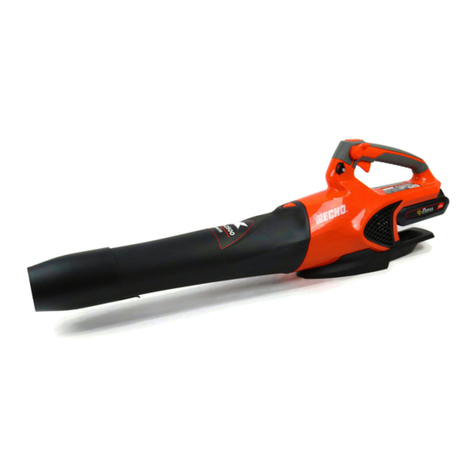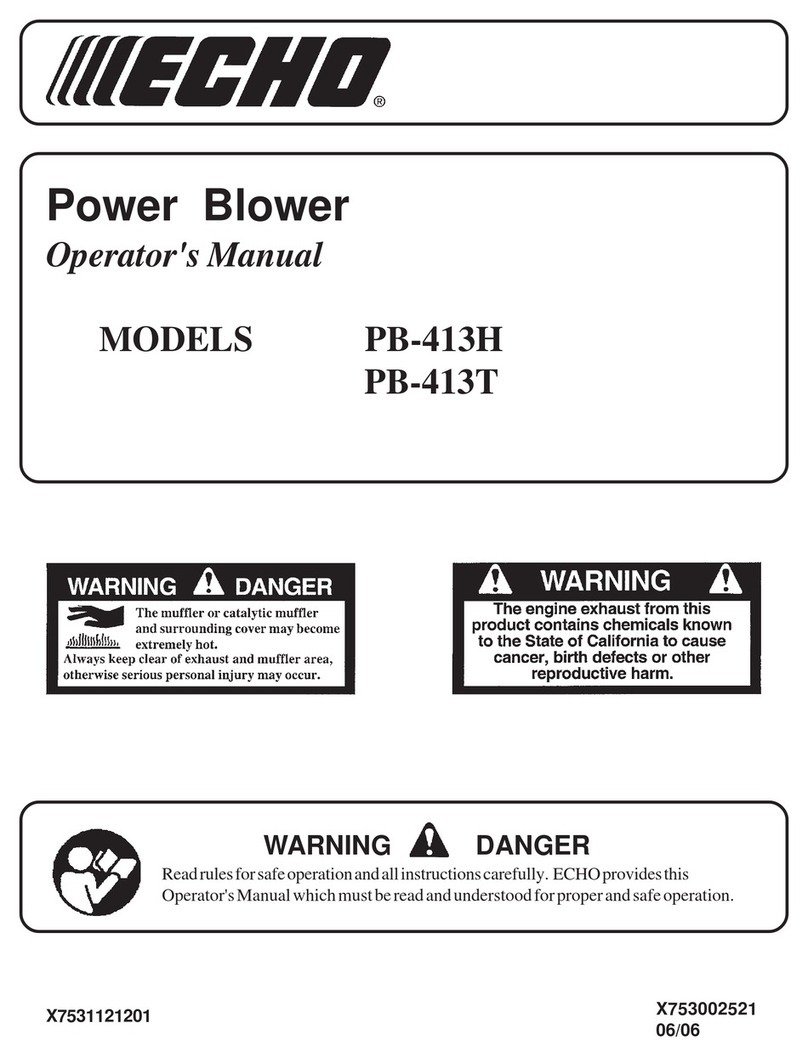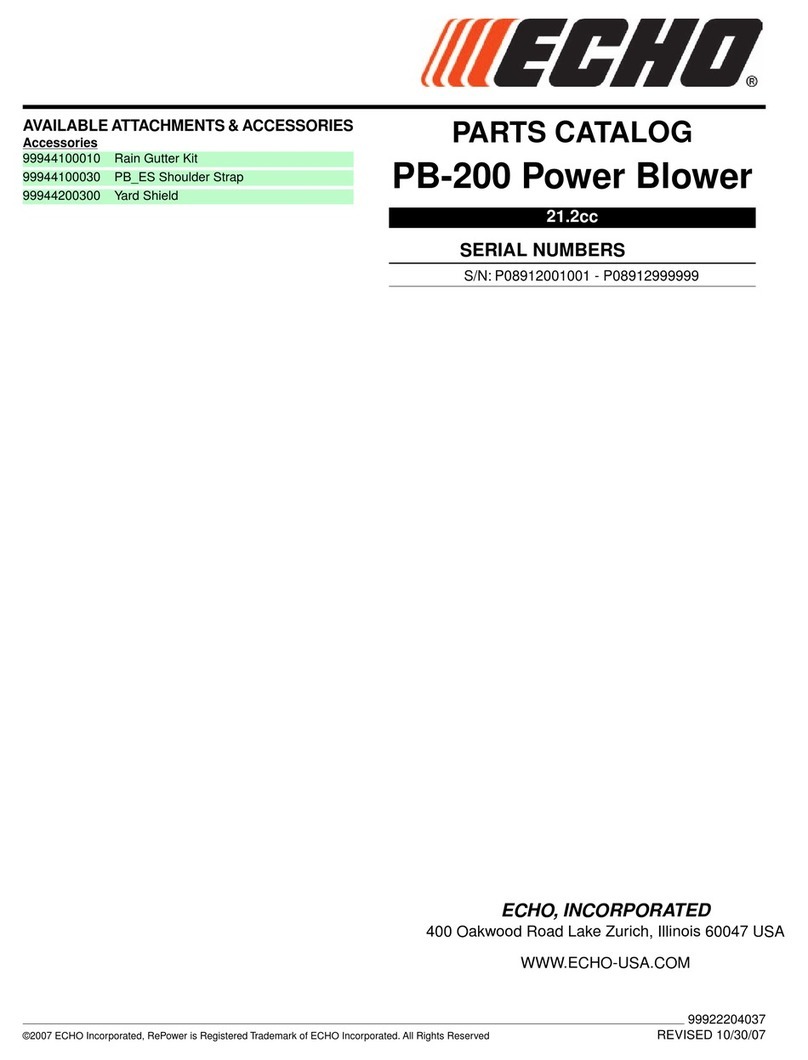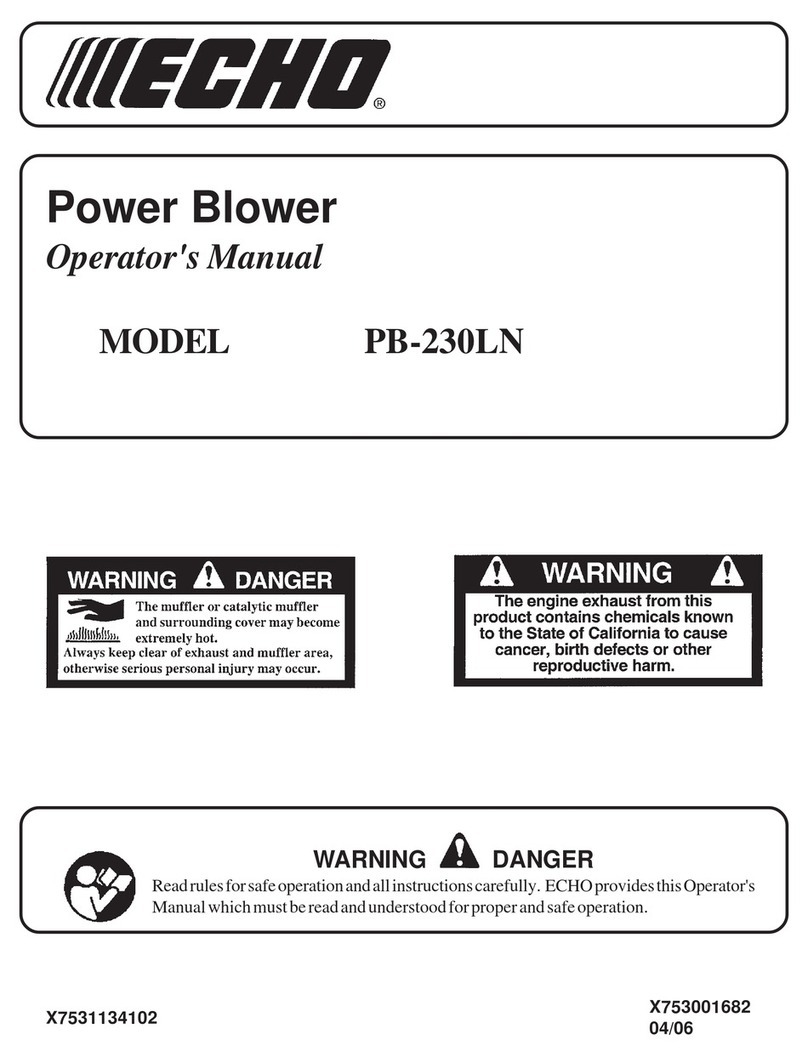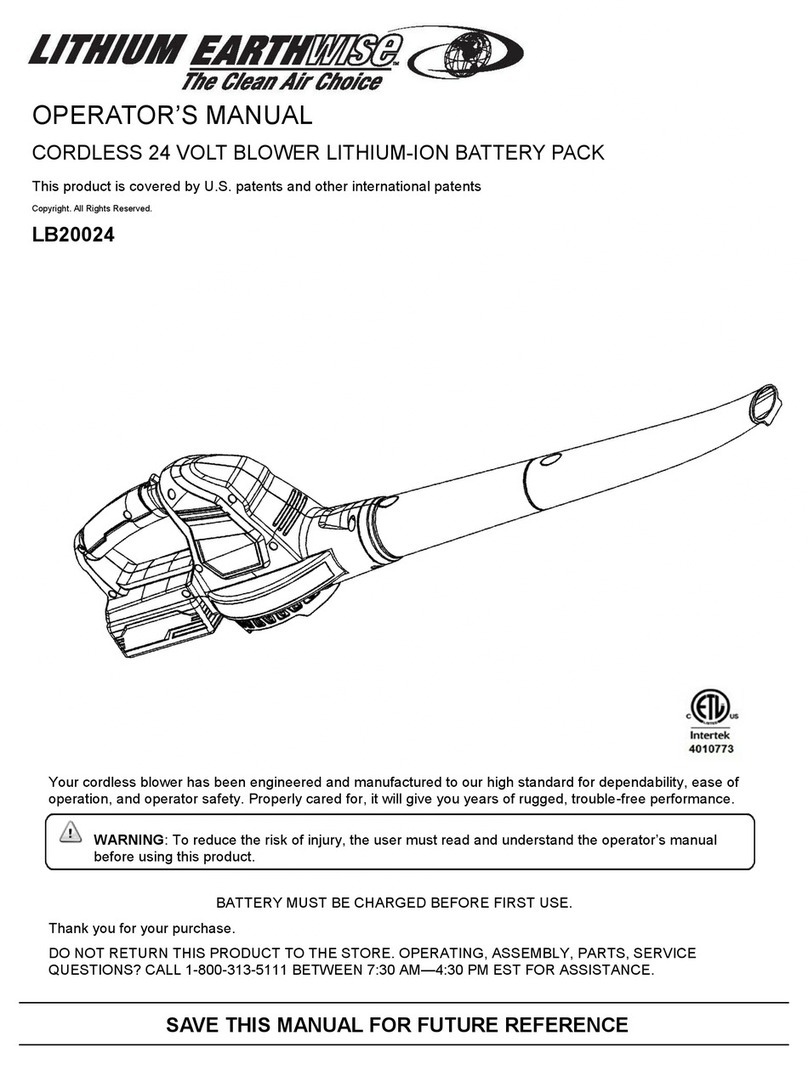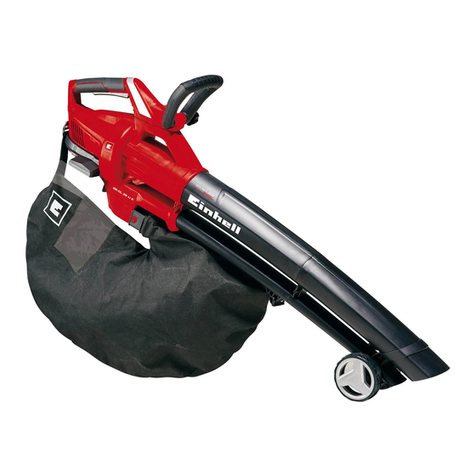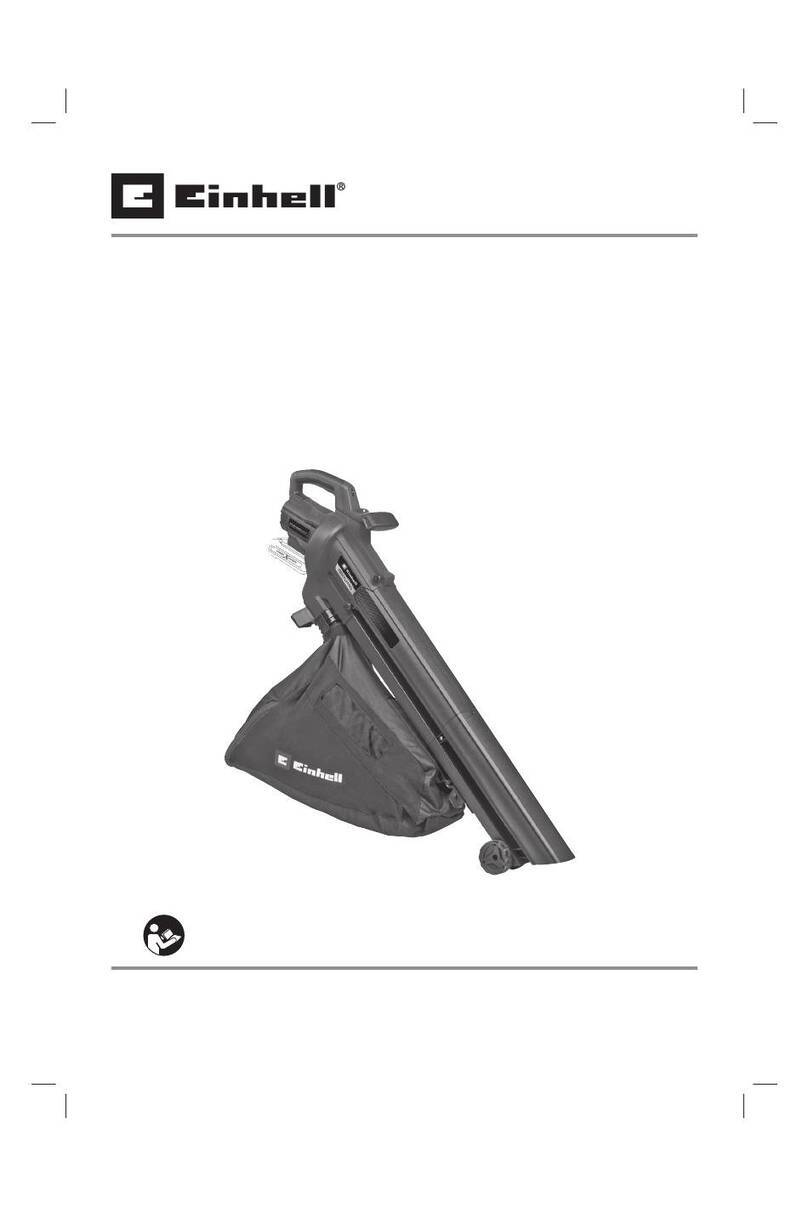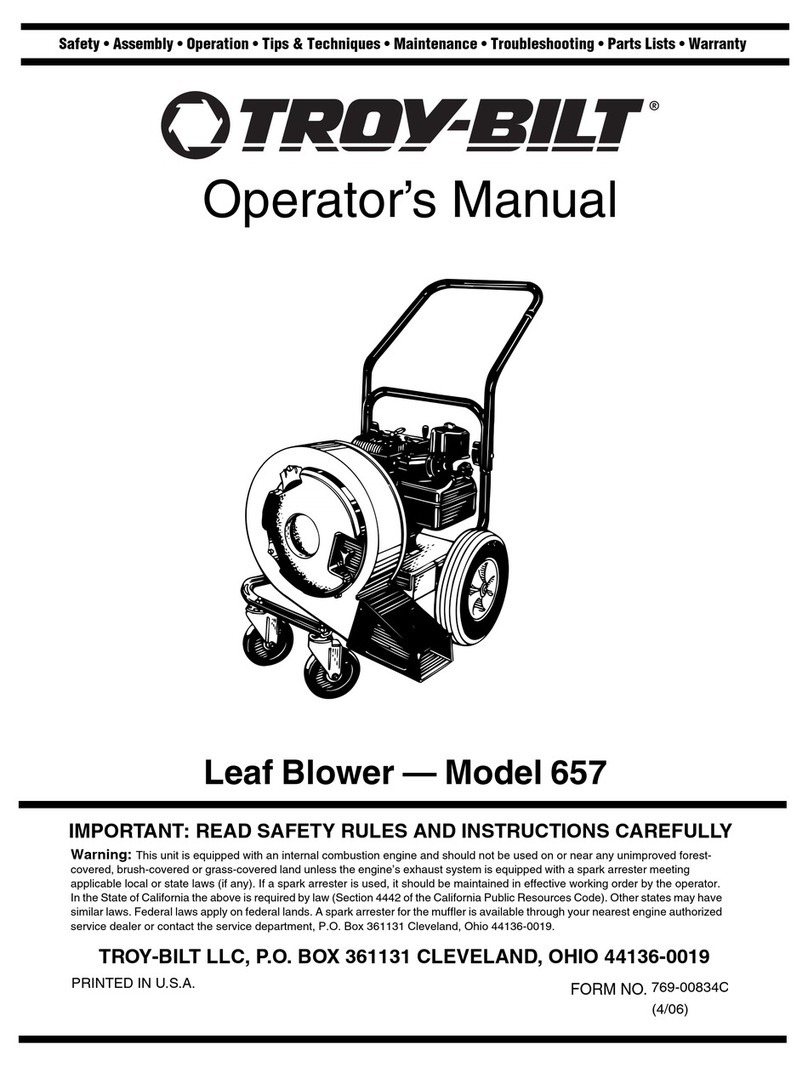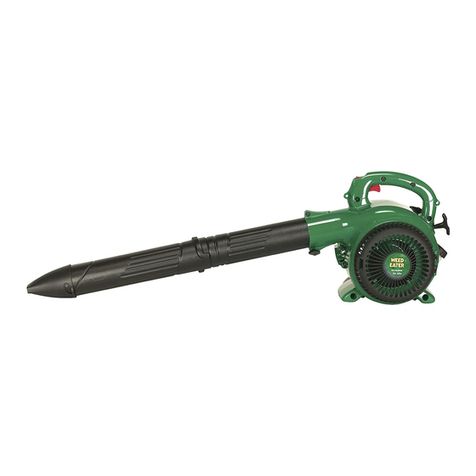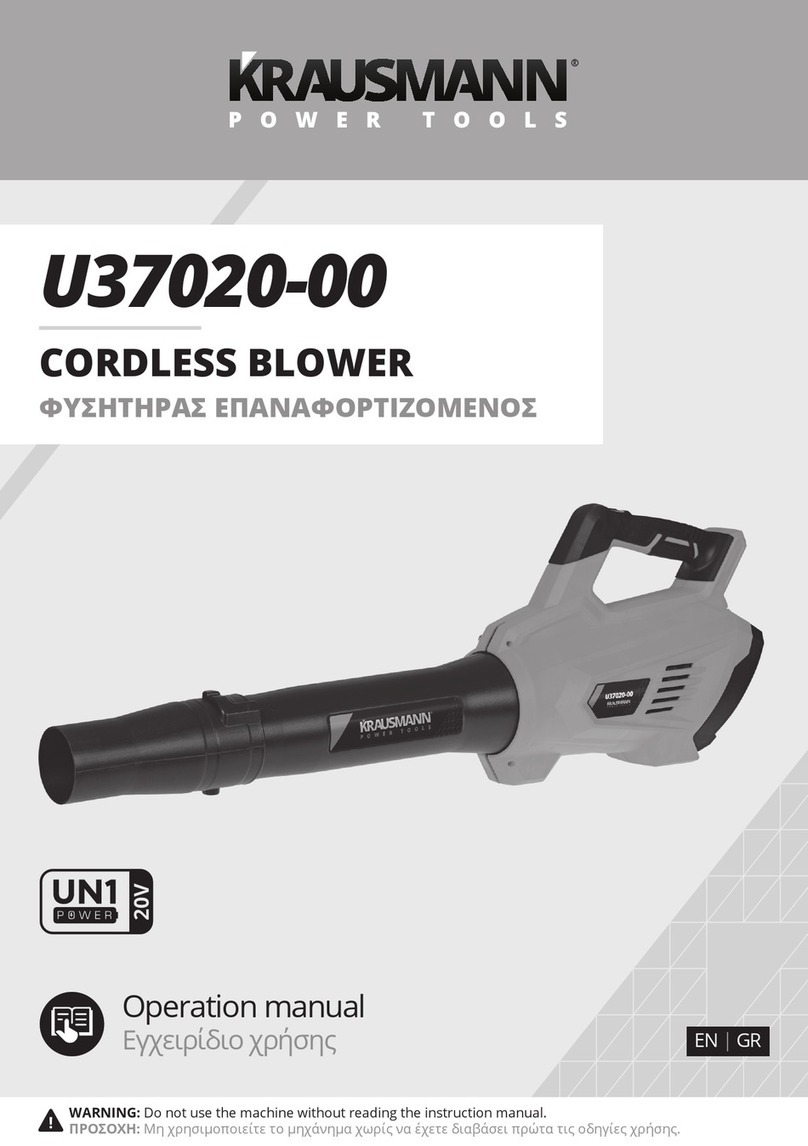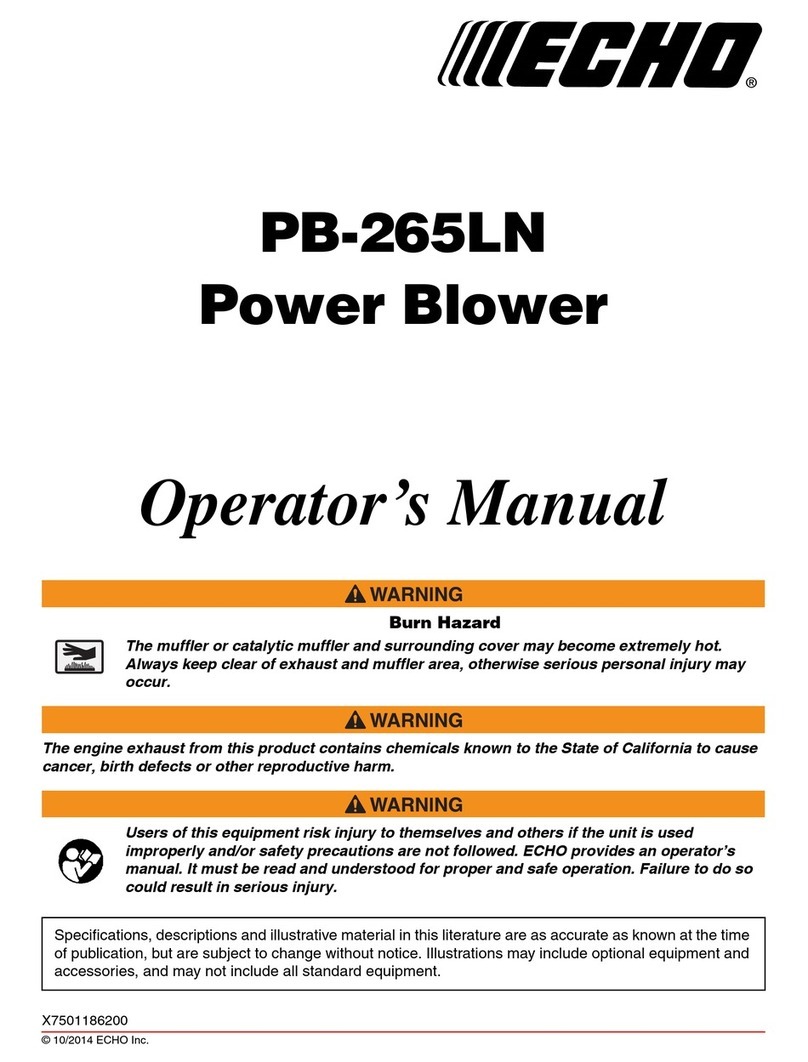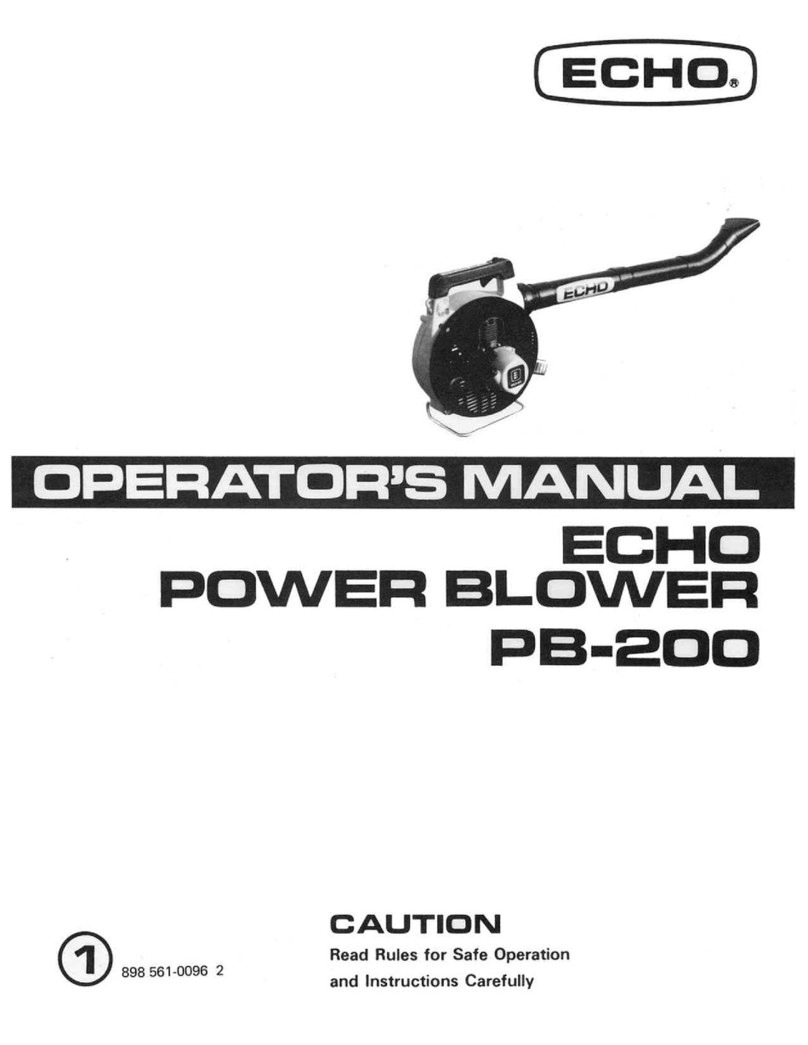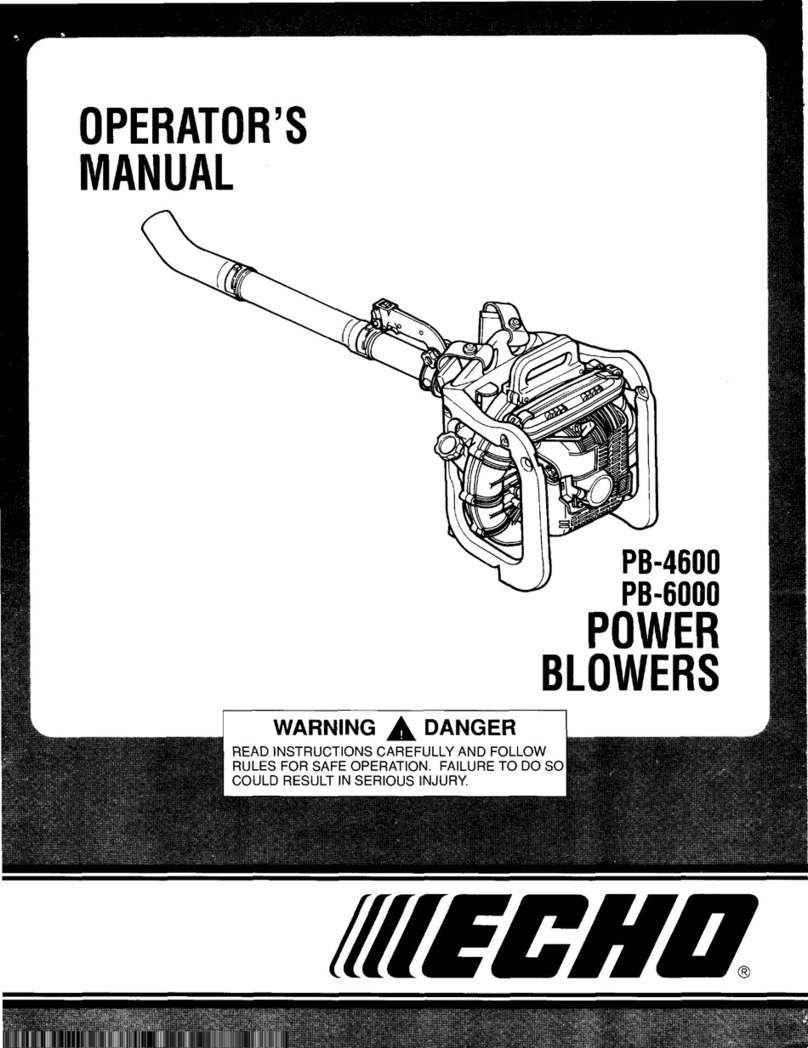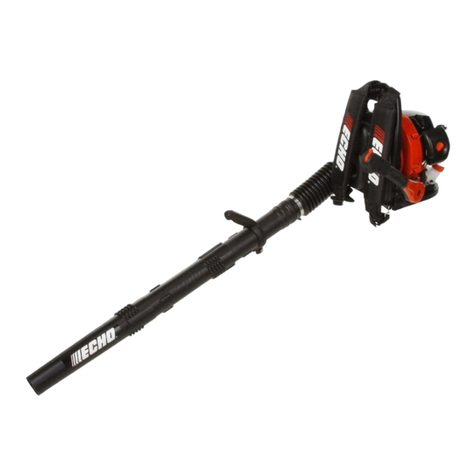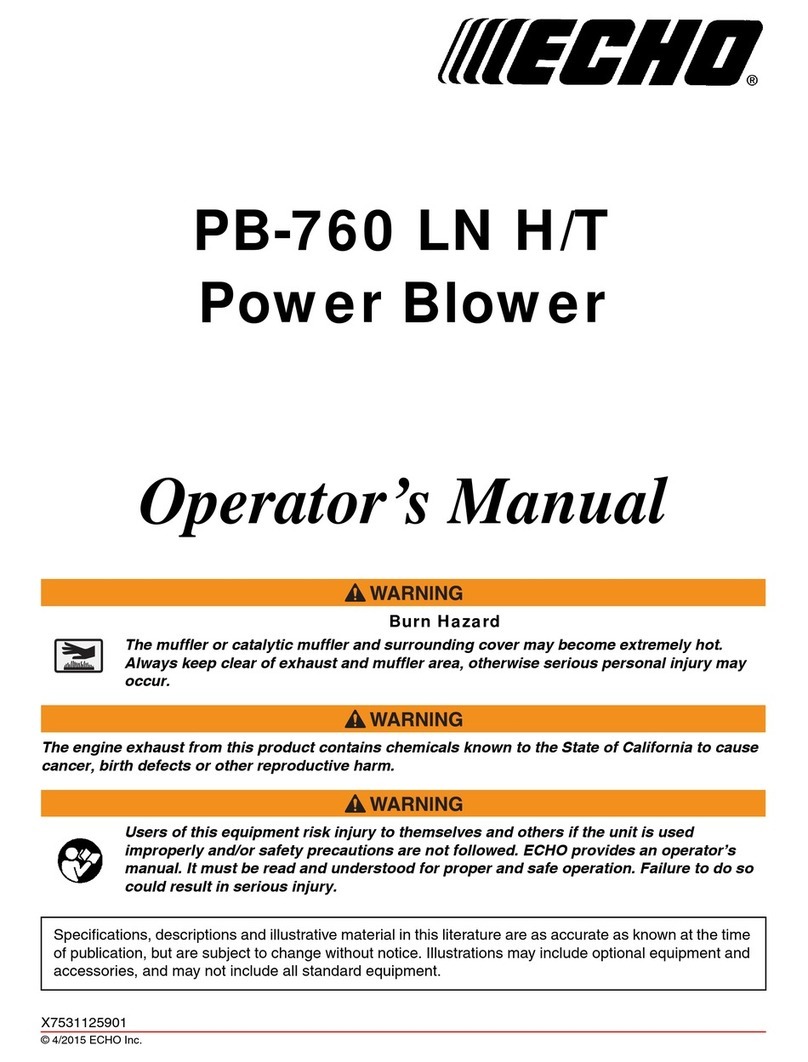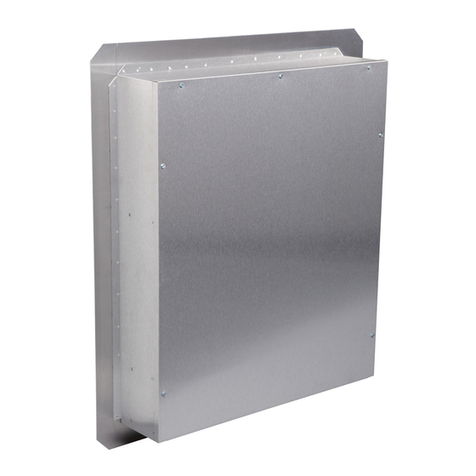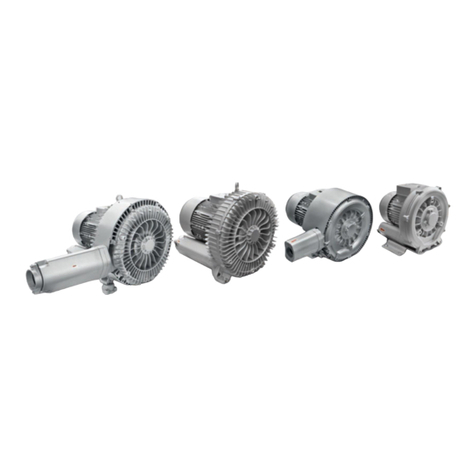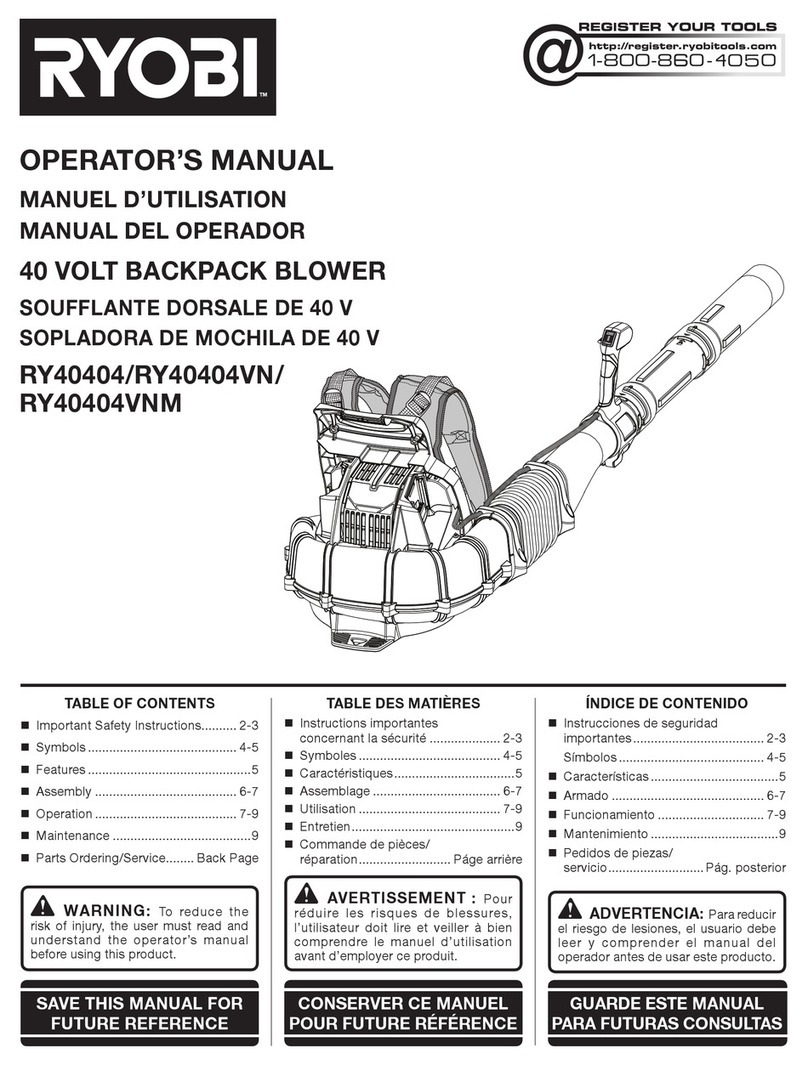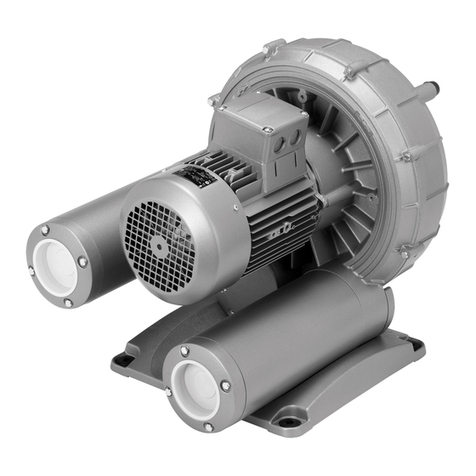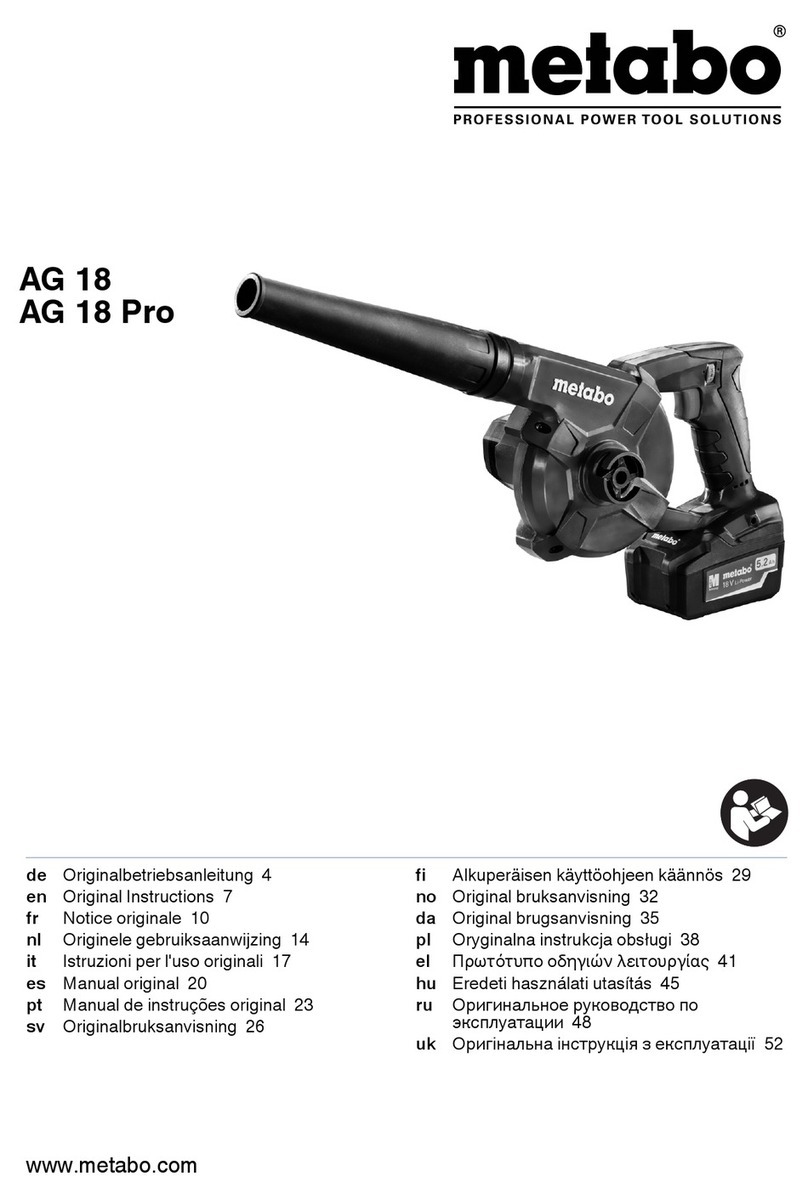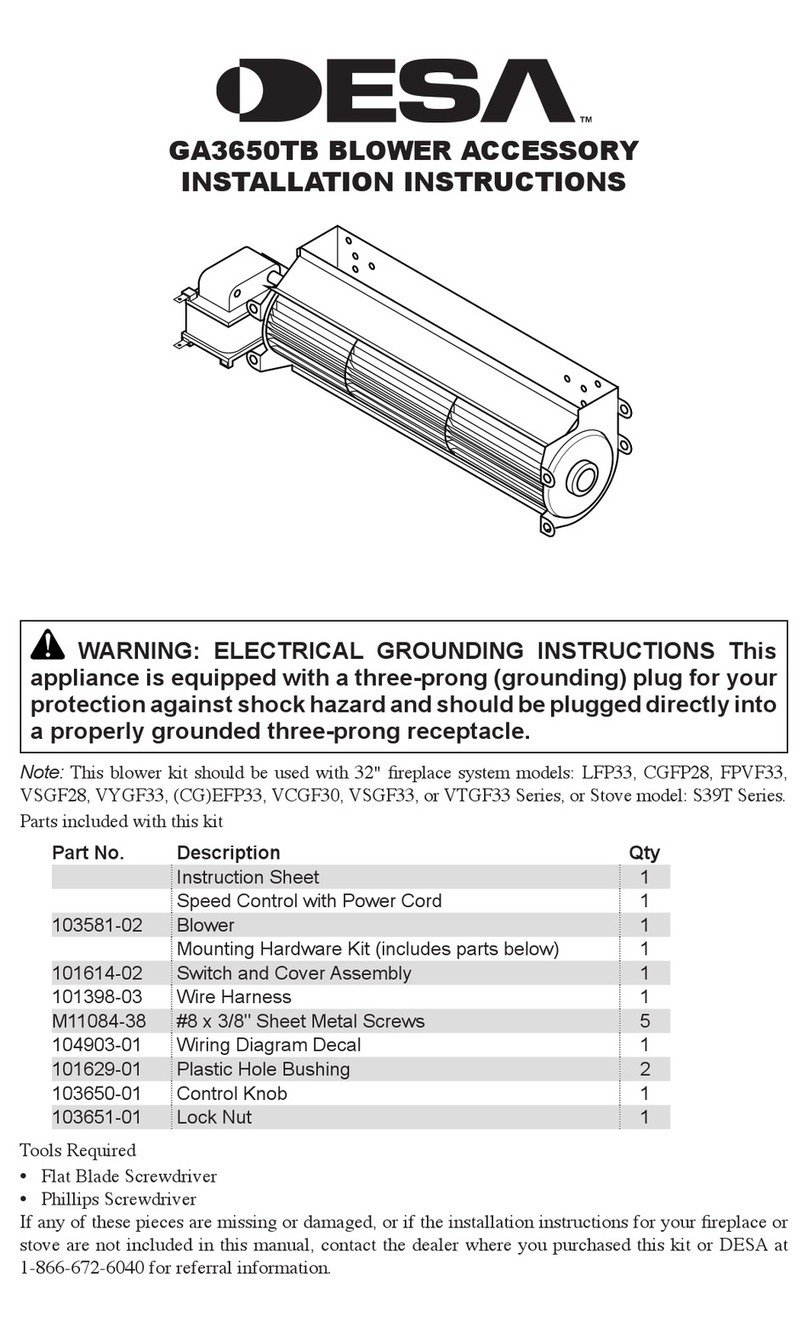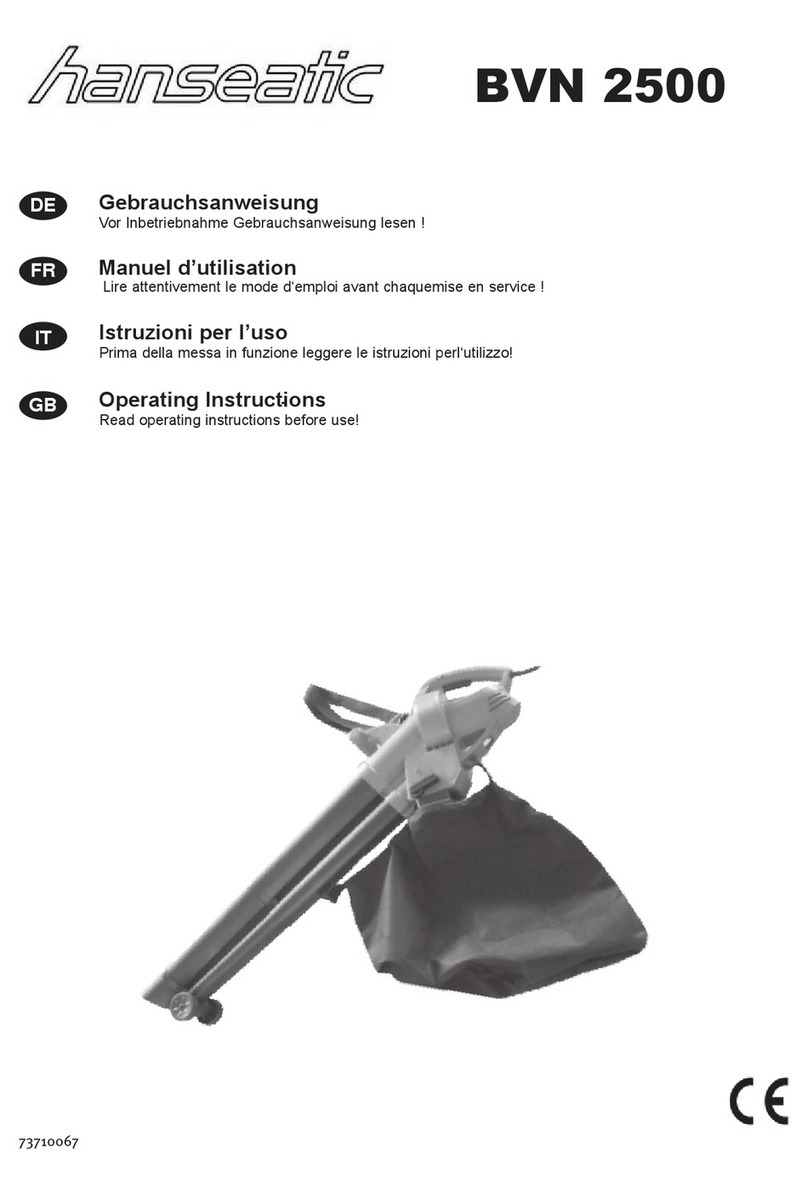
5
POWER BLOWER
OPERATOR'SMANUAL
EXTENDED OPERATION/EXTREME CONDITIONS
Vibration and Cold
It is believed that a condition called Raynaud’s Phenomenon, which
affects the fingers of certain individuals may be brought about by
exposure to vibration and cold. Exposure to vibration and cold may
cause tingling and burning sensations followed by loss of color and
numbness in the fingers. The following precautions are strongly
recommendedbecause the minimumexposure which mighttriggerthe
ailmentisunknown.
• Keep your body warm, especially the head, neck, feet, ankles, hands
and wrists.
• Maintain good blood circulation by performing vigorous arm
exercises during frequent work breaks and also by not smoking.
• Limit the hours of operation. Try to fill each day with jobs where
operating the blower or other hand-held power equipment is not
required.
• If you experience discomfort, redness and swelling of the fingers
followed by whitening and loss of feeling, consult your physician
before further exposing yourself to cold and vibration.
Repetitive Stress Injuries
It is believed that overusing the muscles and tendons of the fingers,
hands, arms and shoulders may cause soreness, swelling, numbness,
weakness and extreme pain in those areas. Certain repetitive hand
activities may put you at a high risk for developing a Repetitive Stress
Injury(RSI).AnextremeRSIconditionisCarpalTunnelSyndrome
(CTS), which could occur when your wrist swells and squeezes a vital
nerve that runs through the area. Some believe that prolonged exposure
to vibration may contribute to CTS. CTS can cause severe pain for
months or even years.
To reduce the risk of RSI/CTS, do the
following:
• Avoid using your wrist in a bent,
extended or twisted position. Instead try
to maintain a straight wrist position.
Also, when grasping, use your whole
hand, not just the thumb and index finger.
• Takeperiodicbreakstominimizerepeti-
tion and rest your hands.
• Reduce the speed and force in which you
do the repetitive movement.
• Do exercises to strengthen the hand and
armmuscles.
• Immediately stop using all power
equipment and consult a doctor if you
feel tingling, numbness or pain in the
fingers, hands, wrists or arms. The
sooner RSI/CTS is diagnosed, the more
likelypermanentnerveand muscle
damage can be prevented.
EQUIPMENT
• Check unit for loose/missing nuts, bolts and screws. Tighten
and/or replace as needed.
• Inspect fuel lines, tank and area around carburetor for fuel leaks. DO
NOT operate unit if leaks are found.
• Do not use blower if any part is missing or damaged.
• Have repairs done only by an authorized ECHO Service dealer.
• Do not use any attachment, accessory or replacement part unless it is
recommended in this Operator's Manual.
• Avoid contact during and immediately after operation. Always keep
exhaustarea clearof flammabledebris. Allowtheengine andmuffler
to completely cool before performing any maintenance activity.
